Pass Your Amazon AWS Certified Cloud Practitioner Certification Easy!
Amazon AWS Certified Cloud Practitioner Certification Exams Questions & Answers, Accurate & Verified By IT Experts
Instant Download, Free Fast Updates, 99.6% Pass Rate.
Download Free AWS Certified Cloud Practitioner Practice Test Questions VCE Files
| Exam | Title | Files |
|---|---|---|
Exam AWS Certified Cloud Practitioner CLF-C02 |
Title AWS Certified Cloud Practitioner CLF-C02 |
Files 1 |
Amazon AWS Certified Cloud Practitioner Certification Exam Dumps & Practice Test Questions
Prepare with top-notch Amazon AWS Certified Cloud Practitioner certification practice test questions and answers, vce exam dumps, study guide, video training course from ExamCollection. All Amazon AWS Certified Cloud Practitioner certification exam dumps & practice test questions and answers are uploaded by users who have passed the exam themselves and formatted them into vce file format.
Mastering Amazon AWS Certified Cloud Practitioner: Your Guide to Cloud Skills and Career Growth
Cloud computing has become a cornerstone of modern technology. It allows organizations to access computing resources like servers, storage, databases, and networking over the internet instead of maintaining physical infrastructure. This approach provides flexibility, scalability, and cost efficiency, enabling businesses to innovate rapidly without heavy upfront investments.
Amazon Web Services (AWS) is one of the leading cloud service providers globally. It offers a broad range of cloud services to help individuals and organizations build sophisticated applications with increased agility, lower costs, and better security. AWS’s robust ecosystem covers everything from computing power and storage to machine learning, analytics, and security.
The AWS Certified Cloud Practitioner certification is designed to validate foundational knowledge of the AWS cloud. It is suitable for anyone looking to gain a basic understanding of cloud concepts, AWS services, security, and billing. This certification is often the starting point for individuals pursuing more advanced AWS certifications, such as Solutions Architect, Developer, or SysOps Administrator.
Why the AWS Cloud Practitioner Certification Matters
In today’s competitive job market, cloud skills are highly valued. Organizations across industries are moving workloads to the cloud, creating an increased demand for professionals with cloud expertise. The AWS Certified Cloud Practitioner certification demonstrates that an individual has a solid grasp of cloud fundamentals and AWS services, making them more attractive to employers.
For beginners, this certification provides a structured path to understanding cloud technology and AWS’s role in it. It equips learners with knowledge about core services, security practices, pricing models, and cloud architecture. Beyond professional recognition, the certification fosters confidence in understanding cloud-based projects and solutions.
Organizations also benefit from having certified professionals on their teams. Employees with AWS certification can contribute to strategic planning, help implement cost-efficient solutions, and ensure compliance with best practices in cloud security.
Core Domains Covered in the Certification
The AWS Certified Cloud Practitioner exam covers several key domains that ensure candidates have a comprehensive understanding of AWS fundamentals. These domains include:
Cloud Concepts
Understanding the fundamental concepts of cloud computing is crucial. This includes differentiating between cloud deployment models, such as public, private, and hybrid clouds, and grasping the benefits of scalability, elasticity, and on-demand access. Candidates learn how cloud computing differs from traditional IT infrastructure, its cost advantages, and how it supports innovation.
AWS Core Services
The exam assesses knowledge of core AWS services across various categories:
Compute services such as Amazon EC2, Lambda, and Elastic Beanstalk
Storage services including S3, EBS, and Glacier
Database services like RDS, DynamoDB, and Aurora
Networking services including VPC, Route 53, and CloudFront
Management and monitoring tools such as CloudWatch, CloudTrail, and the AWS Management Console
Understanding the purpose, functionality, and use cases of these services is essential for exam success.
Security and Compliance
Security is a top priority for any cloud deployment. AWS follows a shared responsibility model, where the provider manages security of the cloud infrastructure, while customers are responsible for securing their applications and data. Candidates need to understand concepts like identity and access management (IAM), encryption, compliance frameworks, and best practices for securing cloud resources.
Billing, Pricing, and Account Management
One of the unique aspects of AWS is its flexible pricing model. Candidates must understand how AWS charges for resources, including pay-as-you-go pricing, reserved instances, and savings plans. Familiarity with cost management tools, billing dashboards, and strategies for optimizing costs is also part of the exam objectives.
Who Should Pursue This Certification
The AWS Certified Cloud Practitioner certification is designed for a broad audience. Individuals without a technical background can use it to gain a foundational understanding of cloud technology and AWS. It is ideal for:
Business professionals and managers seeking to understand cloud concepts for strategic decision-making
Sales and marketing personnel working with cloud solutions
IT beginners looking to start a career in cloud computing
Students or professionals preparing for advanced AWS certifications
While the certification does not require hands-on experience, practical exposure to AWS services through free-tier accounts can significantly enhance understanding and retention of concepts.
Benefits of Earning the Certification
Achieving the AWS Certified Cloud Practitioner credential offers several advantages:
Career Opportunities
Cloud skills are in high demand across industries, from technology and finance to healthcare and government. The certification opens doors to entry-level cloud roles, such as cloud analyst, cloud sales associate, or IT support specialist.
Foundation for Advanced Learning
This certification provides a strong foundation for more technical AWS certifications. Once you understand the basics, you can pursue certifications like AWS Solutions Architect, Developer, or DevOps Engineer, which require deeper technical expertise.
Professional Credibility
Having an AWS certification demonstrates to employers and peers that you possess verified knowledge of cloud computing concepts and AWS services. It can boost confidence in team projects and enhance your professional profile.
Understanding Cloud Economics
AWS emphasizes cost optimization and efficient resource utilization. By learning pricing models, billing, and cost management strategies, certified professionals can make informed decisions that save organizations money and improve project outcomes.
How to Prepare for the Exam
Preparation is key to passing the AWS Certified Cloud Practitioner exam. Here are some effective strategies:
Understand Exam Domains
Focus your study on the four core domains: Cloud Concepts, AWS Core Services, Security, and Billing & Pricing. Understanding the weight of each domain and the types of questions asked can guide your study approach.
Utilize AWS Free Tier
AWS offers a free-tier account that allows users to explore services like EC2, S3, and Lambda without incurring costs. Hands-on practice is invaluable for understanding how services work in real-world scenarios.
Study Official Resources
AWS provides a range of learning resources, including whitepapers, training courses, and practice exams. Reading documentation and engaging with AWS tutorials can strengthen conceptual knowledge.
Take Practice Exams
Simulated exams help identify weak areas and familiarize candidates with the question format. They also build confidence and improve time management skills during the actual exam.
Join Learning Communities
Engaging with online forums, study groups, and AWS communities can provide insights, tips, and real-world examples that enhance understanding. Discussions with peers often reveal perspectives not found in official materials.
Exam Format and Logistics
The AWS Certified Cloud Practitioner exam typically consists of multiple-choice and multiple-response questions. The exam duration is 90 minutes, and it is available in several languages. While it does not require prior hands-on experience, familiarity with AWS services and cloud concepts is highly recommended.
The passing score is determined on a scale from 100 to 1000, with a minimum score typically around 700. Candidates receive a detailed score report after the exam, highlighting strengths and areas for improvement.
Real-World Applications of AWS Knowledge
Understanding AWS fundamentals is not just about passing an exam; it also translates into practical skills applicable in the workplace. For example, knowing how to use S3 for storage can help teams manage data efficiently, while understanding IAM policies ensures secure access management. Knowledge of pricing models allows businesses to optimize cloud spending, avoiding unnecessary costs.
Professionals with AWS knowledge can contribute to cloud strategy discussions, participate in solution design, and collaborate with technical teams on cloud migrations or deployments. Even at a foundational level, understanding AWS services and cloud concepts empowers individuals to make informed decisions and drive projects forward.
The AWS Certified Cloud Practitioner certification is a valuable credential for anyone looking to build a career in cloud computing. It provides a solid foundation in cloud concepts, AWS services, security, and cost management, offering both professional credibility and practical knowledge.
By understanding the core domains, engaging with hands-on practice, and preparing strategically, candidates can pass the exam confidently. More importantly, this certification serves as a gateway to advanced AWS certifications and career opportunities in the growing field of cloud technology.
For individuals and organizations alike, the AWS Certified Cloud Practitioner certification represents not just a credential, but a stepping stone toward a deeper understanding of cloud innovation, efficiency, and strategic advantage in today’s technology-driven world.
Understanding AWS Security
Security is a critical aspect of cloud computing. AWS follows a shared responsibility model, which defines the division of security duties between the cloud provider and the customer. Understanding this model is essential for managing cloud resources safely and ensuring compliance with industry standards.
Shared Responsibility Model
The shared responsibility model clarifies that AWS manages the security of the cloud infrastructure, including physical data centers, networking, and hardware. Customers, on the other hand, are responsible for securing their applications, data, and configurations within the cloud. This includes tasks such as:
Configuring access permissions and policies
Encrypting sensitive data
Implementing network security measures
Monitoring activity for suspicious behavior
By understanding this distinction, users can apply the right security measures to protect their workloads effectively.
Identity and Access Management (IAM)
IAM is a fundamental service in AWS security. It allows users to control who can access AWS resources and what actions they can perform. Key concepts include:
Users and Groups: Individual accounts or collections of users with specific permissions
Roles: Temporary permissions assigned to users or services for specific tasks
Policies: Documents that define allowed or denied actions for users, groups, or roles
By implementing IAM best practices, organizations can minimize security risks while ensuring authorized access to resources.
Encryption and Data Protection
AWS provides a variety of encryption options to secure data both at rest and in transit. Services such as AWS Key Management Service (KMS) enable users to manage encryption keys effectively. Using encryption ensures that sensitive information remains protected even if unauthorized access occurs.
Compliance and Governance
AWS maintains compliance with multiple regulatory standards, such as GDPR, HIPAA, and ISO 27001. Understanding these frameworks helps organizations meet legal and contractual obligations. AWS offers tools and reports to support governance, risk management, and compliance efforts, making it easier for businesses to operate securely in the cloud.
Security Monitoring
Monitoring and logging are crucial for detecting potential threats. AWS services like CloudTrail, CloudWatch, and GuardDuty provide insights into account activity, system performance, and security events. Continuous monitoring allows teams to respond quickly to incidents and maintain the integrity of cloud environments.
AWS Networking and Connectivity
Networking services enable secure communication between AWS resources, on-premises systems, and end-users. Understanding AWS networking is critical for designing resilient, high-performance architectures.
Virtual Private Cloud (VPC)
VPC allows users to create logically isolated networks within AWS. Key features include:
Subnets for organizing resources
Route tables for managing traffic
Internet gateways for connecting to the internet
Security groups and network ACLs for controlling access
VPC enables organizations to implement secure and scalable network architectures tailored to their specific needs.
Content Delivery and DNS
Amazon CloudFront and Route 53 enhance performance and availability:
CloudFront distributes content globally, reducing latency and improving user experience
Route 53 manages domain names, routes traffic, and ensures high availability
These services help businesses deliver applications efficiently to a worldwide audience while maintaining reliability.
Monitoring and Operational Tools
AWS offers several tools for maintaining visibility, performance, and operational excellence:
CloudWatch monitors metrics, logs, and events, providing actionable insights
CloudTrail tracks API activity for auditing and compliance purposes
AWS Config assesses resource configurations and evaluates compliance against rules
These tools empower teams to manage cloud environments proactively, detect anomalies, and ensure operational continuity.
Real-World Applications of AWS Security
Understanding AWS security concepts is not only essential for the exam but also vital in practical scenarios. For example, implementing IAM policies can prevent unauthorized access to sensitive data, while CloudWatch alarms can alert teams to unusual activity, enabling rapid incident response.
Organizations also benefit from compliance reporting, which ensures that industry regulations are consistently met. Knowledge of encryption, monitoring, and governance allows teams to deploy applications securely and manage risks effectively.
Integration of Core Services with Security
AWS services are designed to work seamlessly with security controls. For instance:
EC2 instances can be launched within VPCs with defined security groups
S3 storage supports encryption and access policies
Lambda functions can operate with minimal permissions, reducing attack surfaces
By combining core services with security best practices, organizations can create robust, reliable, and compliant cloud architectures.
Preparing for Security and Services Questions on the Exam
The AWS Certified Cloud Practitioner exam tests candidates on both core services and security concepts. Tips for preparation include:
Familiarize yourself with the purpose and use cases of key services
Understand the shared responsibility model and IAM principles
Learn how encryption, compliance, and monitoring tools enhance security
Review real-world examples of service integration with security measures
Using practice questions and hands-on experience reinforces theoretical knowledge, helping candidates approach exam questions with confidence.
AWS Service Categories in Depth
AWS categorizes services into multiple domains, each with specific roles in application development and deployment:
Compute Domain
Beyond EC2 and Lambda, other compute services include Elastic Beanstalk, Fargate, and Lightsail. These services allow developers to choose the level of infrastructure management they prefer, from fully managed serverless options to more customizable virtual machines.
Storage Domain
In addition to S3, EBS, and Glacier, AWS offers storage solutions such as FSx for Windows File Server and Elastic File System (EFS). These services cater to different workloads, from enterprise file storage to shared file systems for applications.
Database Domain
AWS databases provide scalability, availability, and high performance. Aurora Serverless, for example, automatically adjusts capacity based on demand, while DynamoDB offers low-latency access for large-scale applications.
Networking Domain
Networking services like VPC, Route 53, CloudFront, and API Gateway enable secure, reliable, and globally distributed architectures. These services support microservices, serverless applications, and hybrid cloud deployments.
Management Tools Domain
Services such as CloudWatch, CloudTrail, AWS Trusted Advisor, and AWS Systems Manager provide operational insights, automation, and guidance for optimizing AWS environments. These tools help maintain security, performance, and cost efficiency.
Practical Tips for Using AWS Services Securely
Apply the principle of least privilege when configuring IAM policies
Enable encryption for all sensitive data, both at rest and in transit
Regularly monitor logs and set alerts for unusual activity
Use tagging and resource organization to manage workloads efficiently
Implement multi-factor authentication (MFA) for all accounts
Apply the principle of least privilege when configuring IAM policies
Enable encryption for all sensitive data, both at rest and in transit
Regularly monitor logs and set alerts for unusual activity
Use tagging and resource organization to manage workloads efficiently
Implement multi-factor authentication (MFA) for all accounts
These practices not only enhance security but also demonstrate a professional approach to managing cloud environments.
Mastering AWS core services and security concepts is essential for the AWS Certified Cloud Practitioner exam and real-world cloud operations. Understanding compute, storage, database, networking, and management tools provides a solid foundation for designing, deploying, and managing cloud solutions.
Security, compliance, and monitoring form the backbone of trustworthy cloud operations. The shared responsibility model, IAM, encryption, and governance frameworks ensure that both providers and customers maintain secure environments.
By integrating core services with security best practices, professionals can create efficient, scalable, and compliant cloud architectures. This knowledge prepares candidates for the exam while equipping them with practical skills applicable in everyday cloud operations, laying the groundwork for advanced AWS certifications and career growth.
Understanding AWS Billing and Pricing
Managing costs is a critical part of using cloud services efficiently. AWS offers a flexible pricing model that allows organizations to pay only for the resources they consume. Understanding these pricing models is essential for both the AWS Certified Cloud Practitioner exam and real-world cloud operations.
Pay-As-You-Go Pricing
AWS primarily operates on a pay-as-you-go basis. This model charges users for compute, storage, and other services only when they are used. Pay-as-you-go offers several benefits:
No upfront costs for infrastructure
Flexibility to scale resources based on demand
Cost savings by avoiding idle or underutilized resources
For example, launching an EC2 instance incurs charges only for the time it is running, allowing organizations to optimize expenses effectively.
Reserved Instances
Reserved instances allow users to commit to using specific services for a one- or three-year term. In exchange for this commitment, AWS offers significant discounts compared to on-demand pricing. Reserved instances are suitable for predictable workloads, such as long-running applications or databases.
Savings Plans
Savings Plans provide another cost-optimization option. Unlike reserved instances, Savings Plans offer flexibility to switch between different instance types and services while still enjoying discounted rates. Organizations can choose from Compute Savings Plans or EC2 Instance Savings Plans based on their usage patterns.
Free Tier and Trial Offers
AWS offers a free tier that allows users to explore core services at no cost for a limited period or with certain usage limits. This is ideal for beginners preparing for the Cloud Practitioner certification, as it provides hands-on experience without incurring charges.
Cost Management Tools
AWS provides several tools to monitor and manage costs effectively:
AWS Billing Dashboard: Offers a centralized view of expenses, usage trends, and upcoming charges
Cost Explorer: Visualizes cost and usage patterns to identify areas for optimization
Budgets: Allows setting spending limits and alerts when thresholds are exceeded
Trusted Advisor: Provides recommendations for cost optimization, security, and performance
Using these tools helps organizations maintain budget control, optimize resource usage, and make informed financial decisions in the cloud.
Preparing for the AWS Cloud Practitioner Exam
Proper preparation is key to passing the AWS Certified Cloud Practitioner exam. The exam evaluates knowledge across four domains: cloud concepts, AWS core services, security, and billing. Here are practical strategies to maximize your chances of success.
Understand Exam Domains
Focus on each exam domain and the associated learning objectives:
Cloud Concepts: Grasp basic cloud computing principles, deployment models, and the benefits of cloud adoption
AWS Core Services: Understand compute, storage, database, networking, and management services
Security: Learn the shared responsibility model, IAM, encryption, and compliance frameworks
Billing and Pricing: Know AWS pricing models, cost management tools, and strategies for optimizing expenses
Understanding the exam objectives ensures efficient study planning and targeted learning.
Use Official AWS Resources
AWS offers comprehensive training resources tailored to the Cloud Practitioner exam:
AWS Training Courses: Free and paid courses provide structured learning paths and practical examples
Whitepapers: AWS publishes detailed documentation covering cloud concepts, architecture best practices, and security
Practice Exams: Sample questions and simulated exams familiarize candidates with the question format and difficulty level
Using official resources ensures that study materials are accurate, up-to-date, and aligned with exam objectives.
Gain Hands-On Experience
Hands-on experience enhances understanding of AWS services and their real-world applications. Beginners can use the free tier to explore:
Launching and managing EC2 instances
Creating and configuring S3 storage buckets
Setting up IAM users, groups, and roles
Monitoring resources using CloudWatch and CloudTrail
Practical experience reinforces theoretical knowledge and helps candidates answer scenario-based exam questions confidently.
Join Study Groups and Online Communities
Engaging with peers through study groups, forums, and online communities can provide additional insights and support. Discussing exam topics, sharing resources, and solving practice problems collectively can enhance learning and motivation.
Practice Time Management
The AWS Certified Cloud Practitioner exam is time-limited. Effective time management is crucial:
Read each question carefully before answering
Allocate time proportionally to question difficulty
Skip and return to questions if unsure to avoid losing time
Use practice exams to simulate timed conditions and improve pacing
Being comfortable with the time constraints reduces stress and improves performance on exam day.
Key Study Tips for Success
Focus on Concepts: Avoid memorizing details without understanding underlying principles
Relate Theory to Practice: Connect exam concepts to real-world AWS scenarios
Review Frequently: Regularly revisit key topics to reinforce retention
Use Mnemonics: Create memory aids for service categories, pricing models, or security principles
Test Yourself: Take practice quizzes and evaluate weak areas for improvement
Focus on Concepts: Avoid memorizing details without understanding underlying principles
Relate Theory to Practice: Connect exam concepts to real-world AWS scenarios
Review Frequently: Regularly revisit key topics to reinforce retention
Use Mnemonics: Create memory aids for service categories, pricing models, or security principles
Test Yourself: Take practice quizzes and evaluate weak areas for improvement
Adopting a structured study approach ensures comprehensive coverage of exam objectives while building confidence.
Scenario-Based Questions on the Exam
The AWS Certified Cloud Practitioner exam often includes scenario-based questions. These require applying knowledge to practical situations rather than recalling facts. Examples include:
Choosing the most cost-effective storage solution for a specific workload
Identifying the correct IAM configuration for a business scenario
Selecting the appropriate compute service based on application requirements
Practicing these scenarios helps candidates develop problem-solving skills and understand how AWS services work together in real-world environments.
Real-World Applications of Billing and Cost Management
Understanding AWS billing and pricing is not just for the exam—it has significant practical implications. Organizations can optimize spending, prevent budget overruns, and make informed decisions about resource allocation.
For example:
Selecting the right EC2 instance type based on usage patterns reduces costs without compromising performance
Using S3 lifecycle policies automatically transitions data to cheaper storage tiers, saving money
Implementing budgets and alerts ensures teams stay within spending limits and avoid unexpected charges
Proficiency in AWS cost management enables professionals to contribute strategically to their organization’s cloud adoption journey.
Combining Core Knowledge, Security, and Cost Management
AWS Certified Cloud Practitioner candidates benefit from understanding how services, security, and costs interrelate. For instance:
Launching EC2 instances in a VPC with proper security groups ensures both performance and compliance
Encrypting S3 data protects sensitive information while optimizing storage costs with lifecycle policies
Monitoring activity with CloudWatch and CloudTrail enables informed decisions on scaling and cost management
This integrated understanding prepares candidates for the exam and practical cloud management.
Exam Day Strategies
On exam day, a calm and methodical approach is essential:
Arrive early or log in ahead of time if taking the online exam
Read each question carefully and identify keywords
Eliminate obviously incorrect answers to increase the probability of selecting the correct one
Manage time to ensure all questions are answered
Review marked questions if time permits
Confidence, combined with solid preparation, significantly increases the chances of passing.
Continuing Learning Beyond the Exam
While passing the exam is an important milestone, ongoing learning is crucial. AWS regularly updates services and introduces new offerings. Staying current ensures professionals can leverage new capabilities effectively and maintain relevance in the field.
Follow AWS announcements and service updates
Experiment with new services using the free tier
Consider pursuing advanced certifications, such as AWS Solutions Architect or Developer, to deepen technical expertise
Continuous learning builds long-term value for both individuals and organizations, ensuring cloud strategies remain efficient, secure, and cost-effective.
Mastering AWS billing, pricing, and exam preparation strategies is key to achieving the AWS Certified Cloud Practitioner certification. Understanding pay-as-you-go, reserved instances, and savings plans, along with using cost management tools, enables candidates to answer exam questions with confidence and apply their knowledge in real-world scenarios.
Effective exam preparation combines theoretical learning with hands-on practice, study resources, scenario analysis, and time management. By focusing on core domains—cloud concepts, services, security, and billing—candidates develop a strong foundation for cloud proficiency and career growth.
Beyond the exam, this knowledge empowers professionals to optimize cloud costs, ensure security, and make informed decisions in cloud projects. The AWS Certified Cloud Practitioner certification is not just a credential—it is a stepping stone to deeper expertise, advanced certifications, and meaningful contributions in the rapidly evolving world of cloud computing.
Career Opportunities with AWS Certification
Achieving the AWS Certified Cloud Practitioner credential opens doors to a wide range of career opportunities in the cloud computing industry. While this certification is foundational, it provides a recognized validation of cloud knowledge that employers value.
Entry-Level Cloud Roles
Many professionals start their cloud careers with roles such as cloud analyst, IT support specialist, or cloud sales associate. These positions leverage foundational knowledge of AWS services, security, and billing. Responsibilities may include:
Monitoring cloud resources and usage
Supporting cloud-based applications and services
Assisting in cost management and optimization
Collaborating with technical teams to implement cloud solutions
These roles offer practical experience with AWS and can serve as stepping stones to more technical positions.
Business and Managerial Roles
Beyond technical positions, the certification benefits business professionals, project managers, and decision-makers. Understanding cloud fundamentals allows leaders to make informed strategic decisions, plan budgets for cloud projects, and oversee teams effectively. Skills validated by the certification include:
Understanding cloud economics and cost implications
Evaluating cloud solutions for business needs
Communicating technical concepts to non-technical stakeholders
Managing compliance and security requirements
This knowledge ensures that business decisions align with technical realities, fostering successful cloud adoption within organizations.
Expanding Roles in Hybrid and Multi-Cloud Environments
As more organizations adopt hybrid or multi-cloud strategies, certified professionals may find opportunities in roles that require understanding multiple cloud providers and integration strategies. The foundational knowledge gained from AWS Cloud Practitioner certification provides a framework for learning other platforms like Microsoft Azure or Google Cloud Platform.
Path to Advanced AWS Certifications
The Cloud Practitioner certification serves as an entry point to more advanced AWS certifications. These higher-level certifications allow professionals to specialize in technical areas, increasing their career options and earning potential.
Solutions Architect
The AWS Certified Solutions Architect focuses on designing and deploying scalable, reliable, and cost-efficient applications. Candidates gain deeper knowledge of architecture best practices, high-availability design, disaster recovery, and network design.
Developer
The AWS Certified Developer certification emphasizes building, deploying, and maintaining applications on AWS. It covers development tools, SDKs, serverless architectures, and CI/CD pipelines.
SysOps Administrator
This certification is targeted at system administrators managing cloud environments. Topics include deployment, monitoring, automation, and operational best practices.
Specialized Paths
AWS offers specialized certifications in areas like machine learning, security, data analytics, and networking. These allow professionals to focus on niche areas aligned with industry demands and personal career goals.
Real-World Applications of AWS Knowledge
AWS knowledge is highly applicable in practical scenarios, both for individuals and organizations. Understanding core services, security, and cost management enables professionals to contribute strategically and operationally.
Designing Cloud Architectures
Professionals can apply AWS knowledge to design architectures that meet business requirements, including scalability, fault tolerance, and cost optimization. For example, using a combination of EC2, S3, and CloudFront can create highly available and globally distributed applications.
Security and Compliance
Understanding the shared responsibility model, IAM, encryption, and monitoring tools ensures secure operations. Organizations can mitigate risks, comply with regulations, and protect sensitive data using best practices learned through the certification.
Cost Optimization
Professionals skilled in AWS billing and pricing can optimize cloud spending. By selecting the right instance types, storage solutions, and pricing models, teams can reduce operational costs while maintaining performance.
Collaboration Across Teams
AWS Certified Cloud Practitioners can bridge the gap between technical and non-technical teams. Their foundational knowledge allows them to translate cloud capabilities into business solutions, facilitate communication, and support project planning.
Continuing Education and Skill Development
Cloud technology evolves rapidly, and continuous learning is essential. Certified professionals should stay updated with new AWS services, features, and best practices to remain competitive.
Hands-On Practice
Continuing to explore AWS services through labs, free-tier accounts, or sandbox environments helps maintain practical skills and reinforces understanding of new features.
Advanced Courses and Workshops
Participating in AWS training programs, workshops, and webinars provides exposure to advanced concepts and real-world case studies. These programs often include interactive exercises, scenario-based learning, and discussions with experts.
Networking and Professional Communities
Engaging with AWS user groups, forums, and professional communities provides opportunities to share experiences, gain insights, and learn best practices from peers. Networking can also open doors to new career opportunities.
Long-Term Career Benefits
The AWS Certified Cloud Practitioner certification offers benefits that extend beyond immediate career opportunities.
Credibility and Recognition
Having a recognized certification validates skills and knowledge, enhancing professional credibility. It demonstrates commitment to learning and a foundational understanding of cloud computing principles.
Career Advancement
The certification can accelerate career growth by opening pathways to more advanced technical roles or managerial positions in cloud strategy and operations. Organizations often prioritize certified individuals for promotions and leadership roles.
Foundation for Future Learning
As technology evolves, foundational knowledge of AWS allows professionals to adapt quickly to new services and concepts. The Cloud Practitioner certification serves as a base for lifelong learning in the cloud ecosystem.
Increased Marketability
Cloud skills are highly sought after in various industries, including technology, finance, healthcare, and government. Certified professionals often have higher marketability, better job prospects, and potentially higher salaries compared to peers without certification.
Integrating AWS Knowledge into Everyday Work
Applying AWS skills in daily work enhances efficiency, security, and innovation. For example:
Automating routine tasks with Lambda functions reduces manual effort
Monitoring applications with CloudWatch ensures timely response to performance issues
Implementing security policies using IAM minimizes risks and enforces compliance
Optimizing resources and costs using billing dashboards improves organizational efficiency
These practices demonstrate practical competence and reinforce the value of the certification in professional settings.
Planning the Next Steps After Certification
After earning the Cloud Practitioner certification, individuals can plan their next steps strategically:
Specialize: Choose an advanced AWS certification aligned with career goals
Gain Experience: Apply knowledge to real-world projects and cloud initiatives
Expand Skills: Explore complementary technologies such as containers, DevOps, or machine learning
Build a Portfolio: Document projects and accomplishments to showcase expertise to employers
A clear roadmap ensures that certification leads to tangible career growth and professional development.
Applying AWS Knowledge Through Real-World Projects
Gaining theoretical knowledge from the AWS Certified Cloud Practitioner certification is important, but applying that knowledge through real-world projects is what truly solidifies understanding. Hands-on experience helps candidates understand how AWS services interact, how security is implemented, and how costs are managed. Practical projects can include:
Deploying a static website using Amazon S3 and CloudFront
Creating a serverless function with AWS Lambda triggered by S3 events
Configuring a relational database in RDS and connecting it to an application
Setting up IAM roles and policies for secure access control
Working on these projects not only prepares candidates for advanced certifications but also demonstrates practical skills to employers, enhancing credibility and employability.
Expanding Technical Expertise
After mastering foundational knowledge, individuals can expand their technical expertise in specialized areas. AWS offers a broad range of services for diverse applications, including:
Machine Learning and AI: Services like Amazon SageMaker and Rekognition allow building intelligent applications
Data Analytics: Amazon Redshift, Athena, and Kinesis support big data analysis and real-time data streaming
DevOps and Automation: Tools like AWS CodePipeline, CodeBuild, and CloudFormation enable continuous integration and deployment
Exploring these services provides opportunities to develop skills that are highly valued in modern IT roles and enhances the ability to design and manage sophisticated cloud architectures.
Advanced Certifications for Career Growth
Building on the Cloud Practitioner certification, pursuing advanced AWS certifications allows professionals to specialize and increase their earning potential. Popular paths include:
AWS Solutions Architect: Focuses on designing scalable and cost-efficient cloud solutions
AWS Developer: Emphasizes developing and deploying applications on AWS
AWS SysOps Administrator: Concentrates on managing and operating AWS environments
Specialty Certifications: Includes security, machine learning, networking, and data analytics
These advanced certifications demonstrate technical depth and open doors to senior cloud roles and leadership positions.
Leveraging AWS Skills in the Workplace
AWS knowledge is highly applicable in professional settings. Professionals can contribute by:
Designing secure and scalable architectures that meet business requirements
Optimizing resource usage and costs using AWS pricing models and management tools
Automating routine tasks with Lambda and other automation services
Monitoring applications and infrastructure with CloudWatch and CloudTrail
Ensuring compliance with industry regulations and security best practices
By integrating these skills into daily work, certified professionals can enhance organizational efficiency and support innovation initiatives.
Career Impact of Advanced AWS Skills
Mastering AWS services and earning advanced certifications can significantly impact career growth. Professionals can pursue roles such as cloud architect, cloud engineer, DevOps engineer, or cloud consultant. Benefits include:
Access to higher-paying roles and leadership positions
Recognition as a cloud expert within teams and organizations
Opportunities to work on cutting-edge projects using emerging technologies
Enhanced professional network through AWS communities and certifications
Employers value individuals who can translate cloud expertise into practical solutions that optimize costs, improve security, and drive business outcomes.
Continuous Learning and Staying Updated
The cloud landscape evolves rapidly, with AWS frequently introducing new services and features. Continuous learning is essential to remain relevant and effective in cloud roles. Strategies include:
Following AWS service announcements and updates
Experimenting with new services using free-tier or sandbox environments
Attending AWS webinars, workshops, and training sessions
Engaging with AWS user groups and online communities
Staying updated ensures that professionals can leverage the latest capabilities and best practices to deliver innovative solutions.
Building a Cloud Portfolio
Demonstrating cloud skills through a portfolio can enhance career prospects. A portfolio can include:
Completed projects with detailed documentation and outcomes
Screenshots or diagrams of deployed architectures
Descriptions of challenges faced and solutions implemented
Examples of cost optimization and security implementations
A well-curated portfolio showcases practical expertise to potential employers and provides concrete evidence of abilities beyond certification credentials.
Strategic Planning for AWS Career Advancement
A structured approach to career planning helps maximize the benefits of AWS knowledge and certification. Steps include:
Setting clear career goals and identifying desired roles
Mapping the required certifications and skills for each role
Gaining hands-on experience through projects and work assignments
Building a professional network and engaging with AWS communities
Continuously learning and adapting to new cloud trends
By following a strategic plan, professionals can accelerate career growth and achieve long-term success in the cloud computing industry.
The AWS Certified Cloud Practitioner certification is a stepping stone to a successful cloud career, but real-world application and continued skill development are essential to fully realize its value. Hands-on projects, advanced certifications, and exploration of specialized services provide practical expertise that enhances employability and professional impact.
By leveraging AWS skills in the workplace, building a portfolio, and staying current with evolving technologies, certified professionals can design secure, cost-efficient, and innovative cloud solutions. Ultimately, continuous learning, practical experience, and strategic career planning enable individuals to thrive in cloud computing roles, contribute meaningfully to organizations, and achieve long-term career advancement.
Maximizing the Value of AWS Certification
Earning the AWS Certified Cloud Practitioner credential is just the beginning of a cloud career journey. Professionals can maximize its value by continuously applying knowledge to practical projects, exploring advanced services, and pursuing specialized certifications. Integrating AWS skills into daily work not only improves operational efficiency and security but also demonstrates measurable impact to employers. Building a portfolio of projects, staying updated with new AWS services, and engaging with professional communities further enhance credibility and marketability. By combining hands-on experience, strategic learning, and real-world application, certified professionals position themselves for long-term success, career advancement, and leadership opportunities in the rapidly evolving cloud computing landscape.
Conclusion
The AWS Certified Cloud Practitioner certification is more than a credential—it is a gateway to a career in cloud computing. By validating foundational knowledge of AWS services, security, and billing, it prepares professionals for both technical and strategic roles.
The certification opens entry-level opportunities while providing a pathway to advanced certifications, specialized roles, and higher earning potential. It equips professionals with practical skills that translate into real-world applications, from designing secure architectures to optimizing cloud costs.
Continued learning, hands-on experience, and engagement with professional communities ensure that certified individuals remain relevant in the fast-evolving cloud landscape. Ultimately, the Cloud Practitioner certification provides a strong foundation for a successful and rewarding career in cloud computing, enabling professionals to contribute meaningfully to organizations and advance in their chosen career paths.
The AWS Certified Cloud Practitioner certification provides a solid foundation in cloud computing, AWS core services, security, and cost management. It is designed for beginners and professionals across technical and non-technical roles who want to validate their understanding of cloud concepts. The certification covers essential topics such as compute, storage, databases, networking, identity and access management, encryption, compliance, and pricing models. By combining theoretical knowledge with hands-on practice through AWS’s free tier, candidates can gain practical experience that prepares them for real-world cloud environments and the certification exam.
Earning this credential opens a variety of career opportunities, from entry-level cloud roles to business and managerial positions that require cloud literacy. It serves as a stepping stone to advanced AWS certifications and specialized technical paths, enhancing professional credibility, employability, and marketability. Beyond the exam, the skills gained enable individuals to design secure cloud architectures, optimize costs, manage resources efficiently, and contribute strategically to organizational cloud initiatives, ensuring long-term career growth in the rapidly evolving cloud computing industry.
Applying AWS knowledge through hands-on projects and real-world scenarios significantly enhances both understanding and career prospects. By deploying services such as EC2, S3, Lambda, and RDS, professionals can gain practical experience in designing secure, scalable, and cost-efficient architectures. Exploring specialized services in machine learning, data analytics, and DevOps further strengthens technical expertise, allowing individuals to tackle complex cloud challenges and demonstrate tangible skills to employers.
Beyond technical skills, leveraging AWS knowledge strategically in the workplace drives measurable impact. Professionals can optimize costs, automate workflows, ensure compliance, and support innovation initiatives, positioning themselves for advanced roles such as cloud architect, DevOps engineer, or cloud consultant. Continuous learning, advanced certifications, and building a portfolio of projects ensure long-term career growth, making AWS proficiency a key differentiator in the rapidly evolving cloud computing industry.
ExamCollection provides the complete prep materials in vce files format which include Amazon AWS Certified Cloud Practitioner certification exam dumps, practice test questions and answers, video training course and study guide which help the exam candidates to pass the exams quickly. Fast updates to Amazon AWS Certified Cloud Practitioner certification exam dumps, practice test questions and accurate answers vce verified by industry experts are taken from the latest pool of questions.
Amazon AWS Certified Cloud Practitioner Video Courses
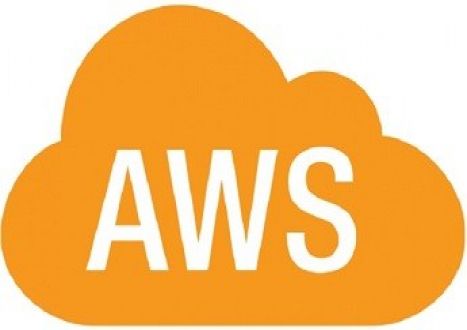



Top Amazon Certification Exams
- AWS Certified Solutions Architect - Associate SAA-C03
- AWS Certified Solutions Architect - Professional SAP-C02
- AWS Certified AI Practitioner AIF-C01
- AWS Certified Cloud Practitioner CLF-C02
- AWS Certified Machine Learning Engineer - Associate MLA-C01
- AWS Certified DevOps Engineer - Professional DOP-C02
- AWS Certified Data Engineer - Associate DEA-C01
- AWS Certified Security - Specialty SCS-C02
- AWS Certified Advanced Networking - Specialty ANS-C01
- AWS Certified Developer - Associate DVA-C02
- AWS Certified Machine Learning - Specialty
- AWS Certified CloudOps Engineer - Associate SOA-C03
- AWS Certified SysOps Administrator - Associate
- AWS-SysOps
Site Search:




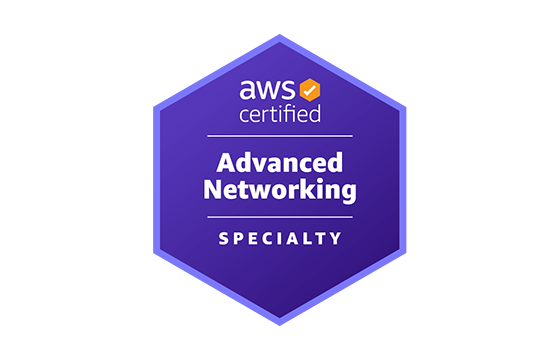



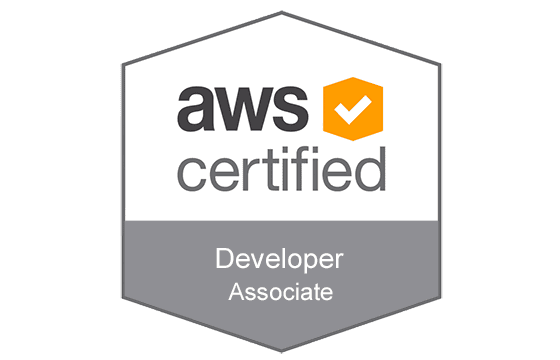
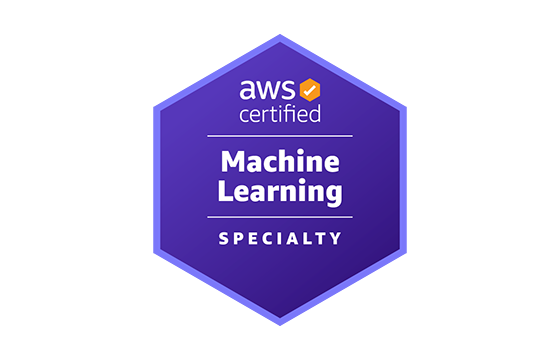

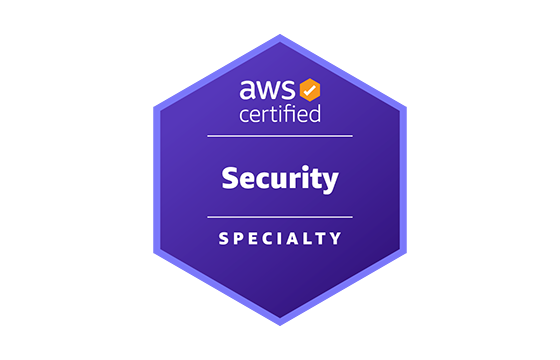
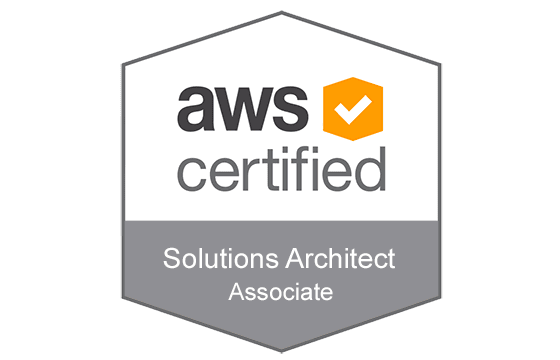
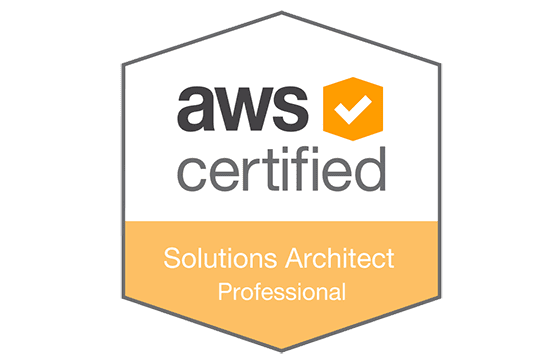
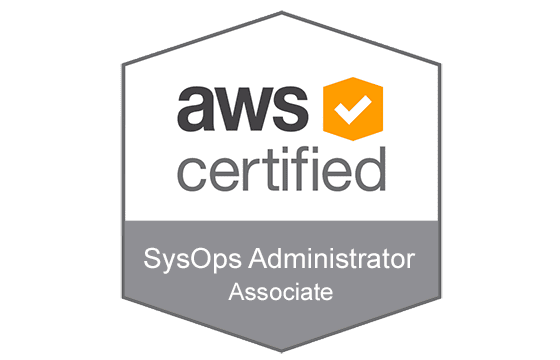
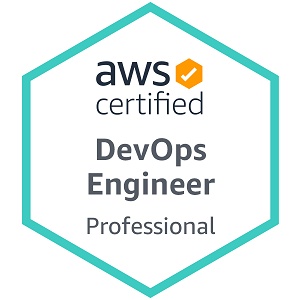



Used premium dump, there were alot of new questions but still managed to pass today by studying with this dump and some online training